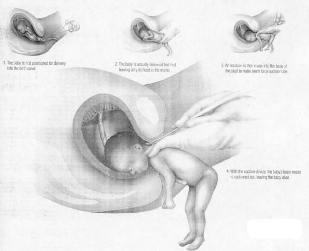Abortion, just like any other surgical procedure, carries with it some risks of life-threatening conditions. As it is defined, abortion is the expulsion of the human fetus prematurely. It involves utilization of medications and/or surgical instruments to halt the growth and expel the fetus from the womb. Spontaneous abortion, likewise called miscarriage, is a type of abortion that occurs even without medical intervention.
Induced abortion, on the contrary, utilizes instruments and drugs in order to stop the development of pregnancy. For several countries, induced abortion is legal. However, there are still a few nations which stand by their principles and believe in the sanctity of life and the viability of a growing fetus. There are actually several lines of thought on the matter.
Some consider that a fetus is considered a human being once it has grown to full maturity and out of the womb. Some, on the other hand, believe that fertilization is the start of a new life. Some women undergo induced abortion for personal reasons, even going through late term abortion.
 The discussion on the legalization of late term abortion has divided several groups. According to Wikipedia, late-term abortion is the termination of pregnancy after 20th week of gestation.
The discussion on the legalization of late term abortion has divided several groups. According to Wikipedia, late-term abortion is the termination of pregnancy after 20th week of gestation.
However, some sources would consider 12th to 16th week of gestation as late. Whenever one chooses to expel the fetus, late term abortion poses a great risk and threat on the pregnant woman.
The procedures by which the activity is carried out may involve D&E (Dilation and Evacuation), D&X (Dilation and Extraction) and hysterotomy.
Dilation and evacuation involves the insertion of a long clamp and the fetus’ body is randomly grabbed. Slowly, the body parts are extracted and the head is crushed and removed. Any fetal products are then vacuumed.
Dilation and extraction, on the other hand, utilizes equipment which dilates the cervix. The fetus is then rotated with its feet facing downwards and its body is pulled down except the head. A surgical scissors are then inserted into the base of the fetal skull and then the brain is suctioned until it collapses. Finally, the fetus is withdrawn.
Another procedure that is done in late term abortion is hysterotomy, which is similar to a Cesarean section. A woman is initially given an anesthetic and a cut is made on her abdomen which extends to the uterus. The fetus is then removed and the excision is stitched back.
The procedures in late term abortion pose a great health risk which could even be fatal. In Dilation and evacuation, some fetal parts and fragments might not be expelled completely. Allowed to remain inside the womb, the parts could decay and cause infection later.
When infection enters the bloodstream, this could even lead to a more life-threatening condition called sepsis. A higher generation antibiotic is usually given during this time. If left untreated, this could result into septic shock and eventually, death. Another risk that could occur in a late term abortion is hemorrhage.
Since it involves the use of surgical instruments, the risk for bleeding is higher. Furthermore, some tears on the uterine wall might cause continuous bleeding and scarring. Some might not even be able to conceive in the future. In other cases, the torn uterus might have to be removed fully to prevent any life-threatening conditions.
Having late term abortion, just like any induced abortion, has its many pitfalls and complications. One must be able to deal not only with the physical risks but also with the psychological and emotional struggles that occur post-abortion.
Some women who undergo the procedure feel a deep sense of regret and some others suffer from depression. Before contemplating on the procedure, one must first seek the guidance of reliable counselors.



